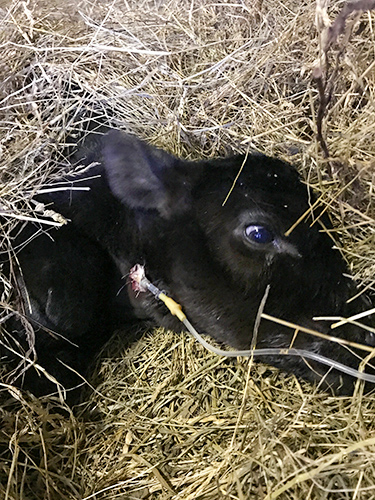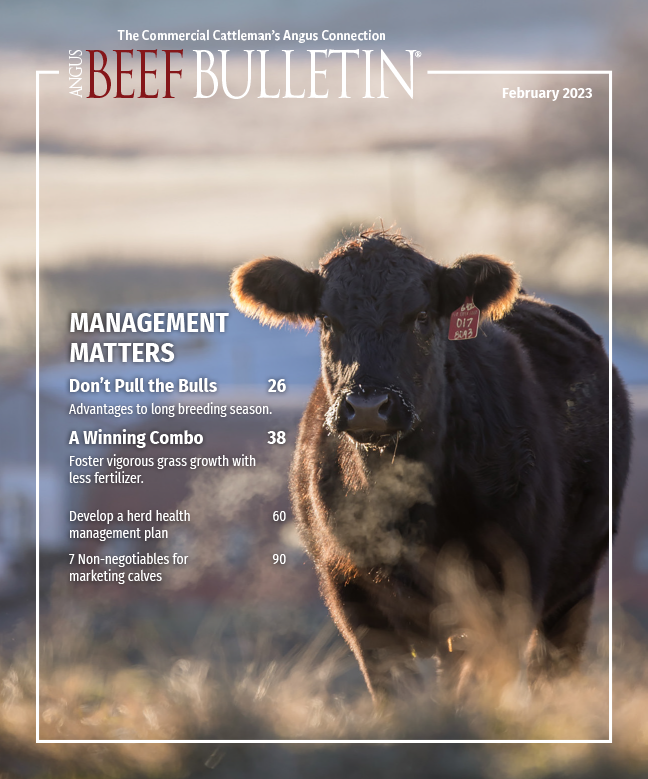
Calf Scours: Contributing Factors Can Cause Problems Even in Best-managed Herds
Tips for when to get extra help with severe cases of calf scours.
For cattle, diarrhea is the most common cause of death in the first weeks of life. It’s generally not the intestinal infection that kills a calf, however. It’s the dehydration. Early treatment and rehydrating the calf can make a big difference in the outcome, and prevention is often more important than proper diagnosis or treatment when it comes to reducing calf losses.

Even in a closed herd, new pathogens can be introduced from birds or wildlife. |
Veterinarian Lee Meyring, who specializes in cow-calf health near Steamboat Springs, Colo., says many variables contribute to scours, and it’s hard to control them all. A producer may do well at preventing problems, only to face a “perfect storm” of wet weather, muddy conditions and stress that results in an outbreak.
Most of the “bugs” that cause scours are always present, either in the cow herd itself or the environment. When conditions are right, there will be sick calves. A few pathogens shed in the cows’ feces can build up if cattle are confined in small areas, exposing calves to higher “doses” than they would normally encounter.
The age of the scouring calf can give a clue to the cause. Since incubation times for the various pathogens differ, the scours they cause tend to hit at certain times:
- E. coli in the first four days of life;
- rotavirus, coronavirus and cryptosporidiosis from seven to 28 days; and
- coccidiosis any time after 21 days of age.
- Toxins formed by Clostridium perfringens can affect calves at any age, and this type of infection is generally fatal very quickly, before the calf shows diarrhea.
Regardless of whether the cause of scours is viral or bacterial, usually the best treatment is frequent administration of fluid/electrolytes to reverse/prevent dehydration. Antibiotics are only helpful for bacterial scours or to prevent secondary complications with viral scours.
“I have seen a few situations where people have done a good job of management (calving in clean areas, keeping the youngest calves away from older calves that may spread infection, vaccinating cows ahead of calving, etc.) and then suddenly they are having scour cases in spite of their best efforts at prevention, or their treatments aren’t working, so something is different that year,” says Meyring. “In those situations, I do recommend sending off a sample of intestine to a lab. When we do the necropsy on a calf that died and find a section of intestine that is affected, I can send it.”
Several laboratories around the country will culture the sample of material and determine what pathogens are present. For something that is atypical, there are labs that will make autogenous vaccines that may help, he says. The classic clostridia bacteria that cause problems in calves are types C and D, and they are in the vaccines people typically use. But, sometimes, he says, another type of clostridia is the problem in a certain herd.
“This is why sometimes we are unsuccessful in prevention or treatment and keep losing calves,” he explains. “Some producers have had autogenous vaccines made and didn’t have any more losses.”
Working with a veterinarian can be helpful in case some detective work needs done to know what’s happening, Meyring says.
“Most people have their own radar on what’s normal and what isn’t for their herd,” he explains. “They may get one or two cases and don’t worry much, but if suddenly they are getting 10 sick ones a day and lose one in spite of treatment, this gets their attention … If it’s a producer who has always paid attention to all the little details in prevention and treatment, then I think it’s worth spending some time and money to get some help and try to figure out what’s different.”
Occasionally something new may come along; a new “bug” may enter the herd with new cattle or with a dairy animal. For instance, salmonella or cryptosporidiosis are common in dairies. Birds or wildlife may bring in something new, as well.
“There are times we need the services available to help us determine the cause of a problem,” says Meyring.
Editor’s note: Heather Smith Thomas is a freelance writer and cattlewoman from Salmon, Idaho.

